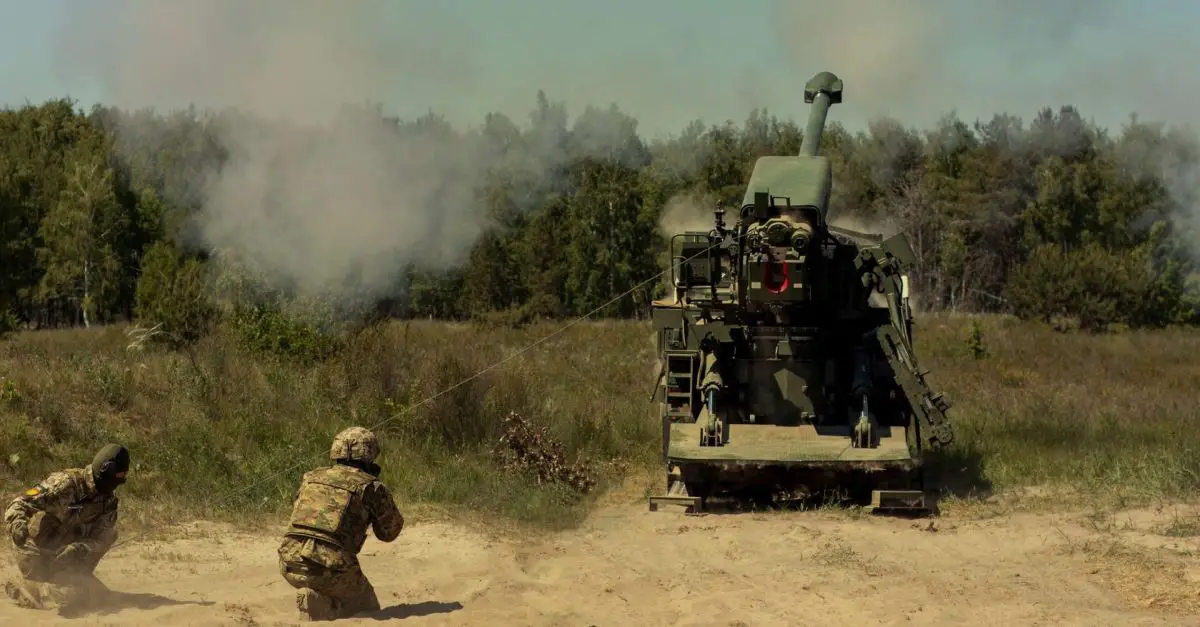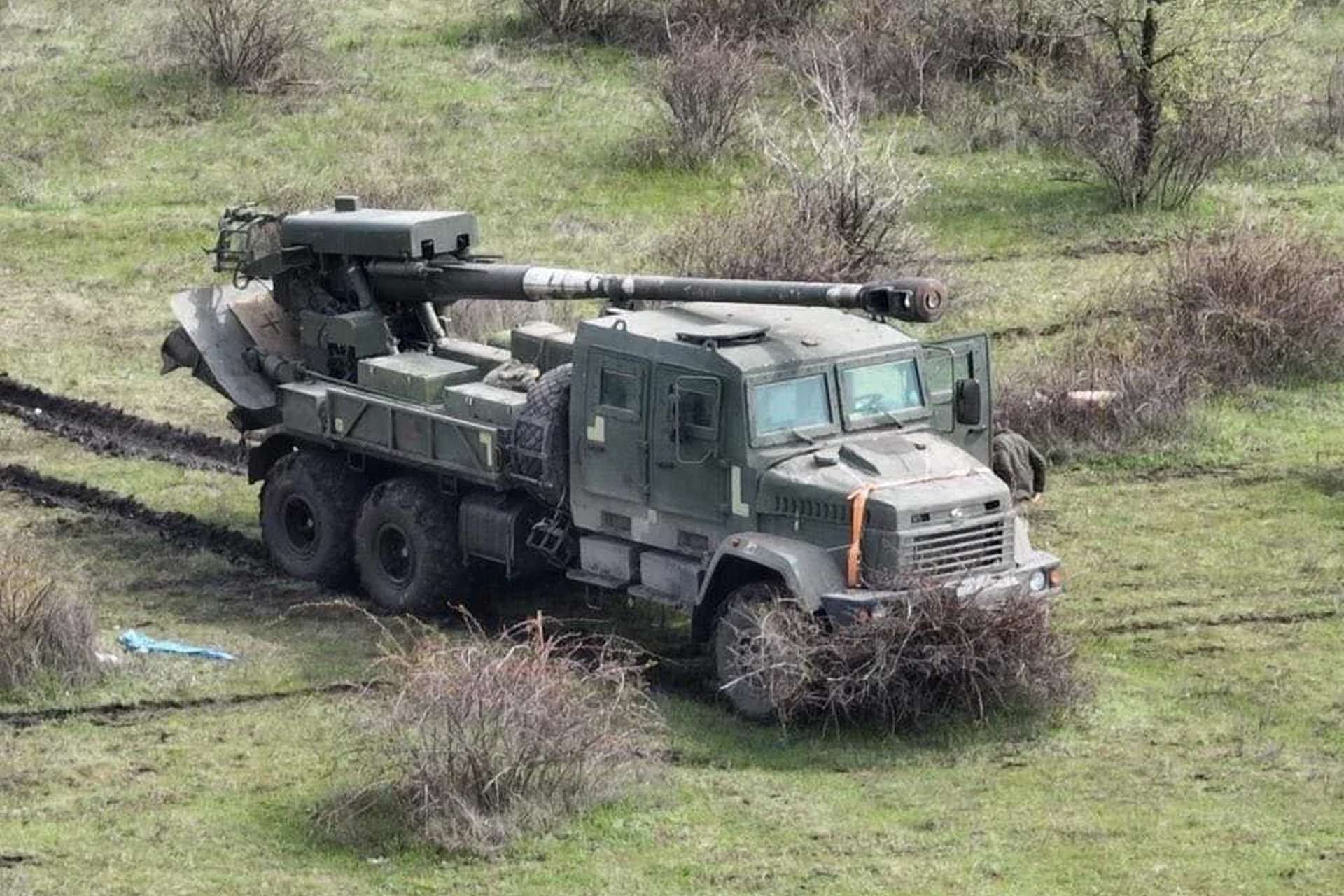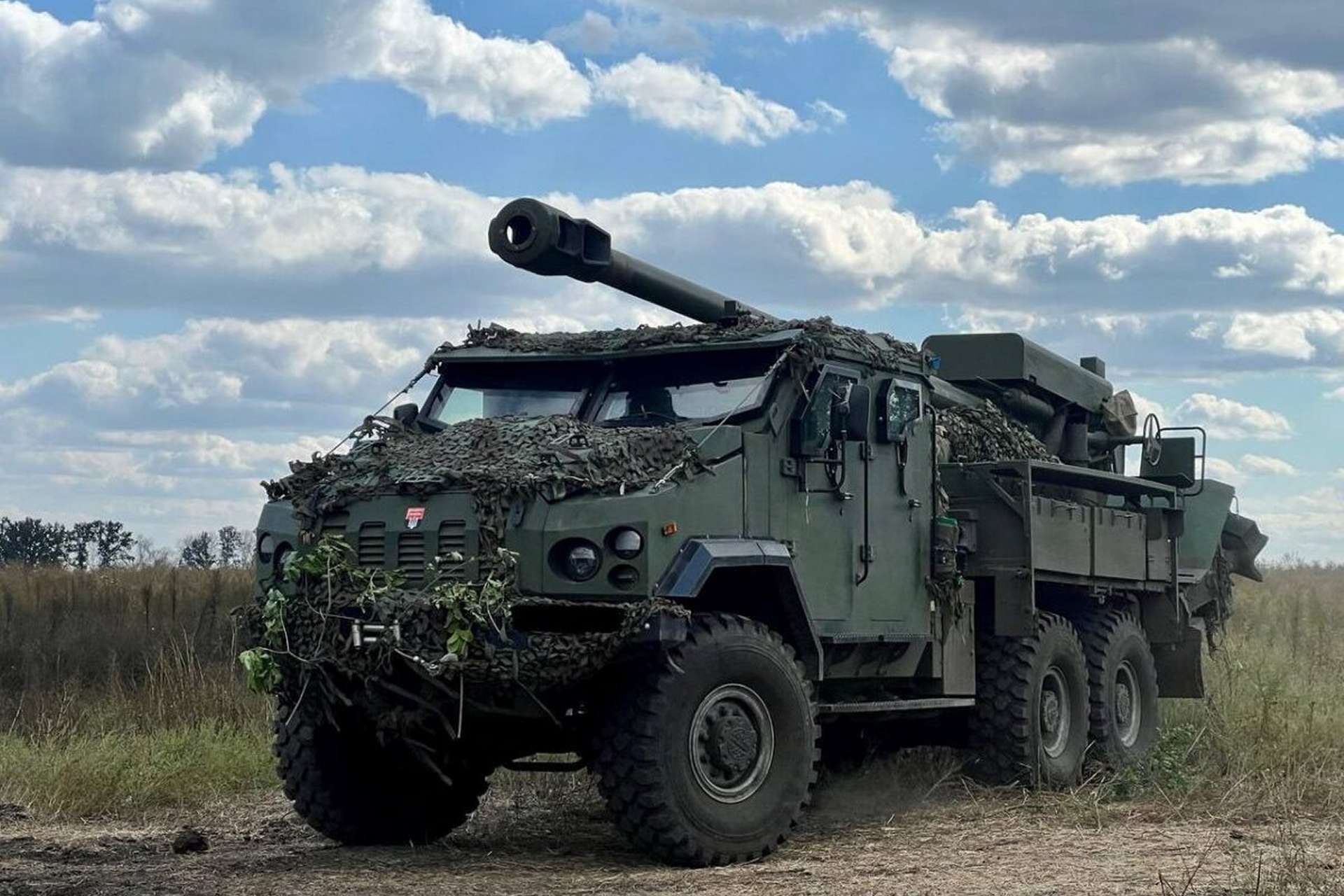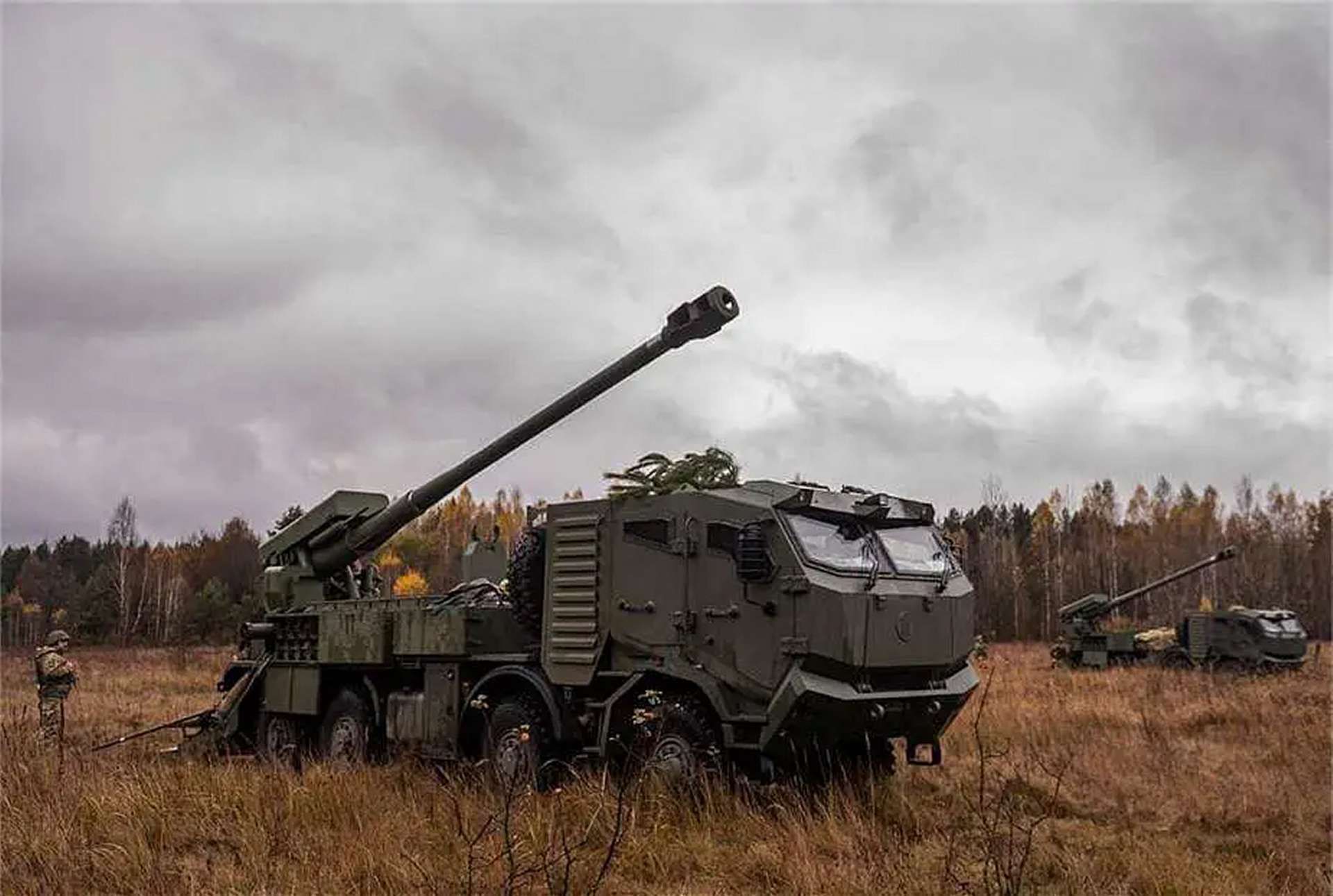Breaking News
Ukraine develops a Bohdana-B 155mm towed howitzer to strengthen artillery capabilities.
According to Ukrayinska Pravda on July 28, 2024, Ukraine is actively developing a towed version of the 155mm Bohdana self-propelled howitzer. This project, which could be named Bohdana-B, involves installing the artillery unit from the Ukrainian self-propelled howitzer onto a Soviet-era howitzer carriage. The specific type of howitzer serving as the prototype for this system has not been disclosed. However, suitable 152mm systems include the Msta-B, Giatsint-B, and D-20, each differing in barrel length and ammunition type.
Follow Army Recognition on Google News at this link

Towed artillery, while less mobile and lacking the armored protection of self-propelled systems, offers advantages such as lower production costs, simplicity, and higher reliability. (Picture source: Ukrainian MoD)
The Giatsint-B chassis is considered the most practical choice for the Bohdana-B, given its adaptation to the proportional energy and weight of the breech and 52-caliber barrel. Another approach involves shortening the barrel by 2,000 mm to 39 calibers, making it more compact and suitable for mounting on a lighter carriage from the Msta-B. This configuration would benefit Ukrainian brigade artillery groups with a limited range of tasks along the front. Additionally, there is an option to convert old Soviet 130mm M-46 guns to the new caliber, a method previously used by Serbian Yugoimport SDPR and the Indian Gun Carriage Factory.
The initiative to develop a trailer version of the Bohdana originated from the Ukrainian Army in 2023, which sought a simpler and less noticeable system than a full-fledged combat vehicle. The prospects for producing the Bohdana-B alongside its self-propelled variant are supported by increased production of 155-caliber artillery barrels. Currently, the Ukrainian defense industry produces more than ten self-propelled artillery systems per month on various chassis.
The project of the trailer howitzer was first reported last November, though specific details were not disclosed until recently. Brigadier General Serhii Baranov, Head of the Main Directorate of Missile Forces and Artillery, confirmed the development, citing that Ukraine produces more guns than it can mount on chassis, leading to the development of towed versions. Towed artillery, while less mobile and lacking the armored protection of self-propelled systems, offers advantages such as lower production costs, simplicity, and higher reliability. Towed howitzers are easier to repair and return to the front line after damage. The Bohdana-B is intended to replace obsolete Soviet towed guns, which have become worn out after ten years of hostilities.

Introduced in 2018 during the Kyiv Independence Day Parade, the original 2S22 Bohdana 1.0 is based on a KrAZ 63221 6×6 high-mobility truck chassis produced by Ukrainian AutoKrAZ, with a total weight of 28,000 kg. (Picture source: Sergey Pashynsky)
The cost of the towed Bohdana is projected to be around $1.5-2 million, cheaper than its self-propelled counterpart, estimated at $2.5-3 million. This reduction in cost is due to the simpler design and potential use of existing Soviet howitzer carriages. The development may involve repurposing gun carriages from decommissioned Soviet howitzers, further reducing production costs.
The Ground Forces of the Armed Forces of Ukraine, having expanded significantly, face a shortage of artillery systems, a situation worsened by wear and combat losses. Western allies are unable to meet Ukraine's artillery needs quickly, prompting the deployment of artillery production within the country. The Ukrainian industry has established the production of 2S22 Bohdana 155mm self-propelled howitzers, but the current production rate of six units per month is insufficient.
Recently, Ukraine has accelerated the production of its Bohdana 4.0 8x8 self-propelled howitzers to eight units per month, up from the six units previously announced last December by President Volodymyr Zelenskyy. This increase suggests a potential surge in domestic arms production. The Bohdana self-propelled howitzer, developed since 2018, is the first Ukrainian self-propelled gun designed for the standard 155 mm NATO caliber adopted by the Ukrainian armed forces.

The upgraded Bohdana 2.0 variant retains the 155mm cannon but introduces various improvements, including a redesigned armored cabin. (Picture source: Ukrainian MoD)
The increase in production is timely as Russia has quadrupled its weapon production. Ukraine needs to rebuild its defense industry to defend itself in the coming years and reduce its dependence on foreign countries. This development is part of a broader effort to strengthen Ukraine's military capabilities with domestic artillery systems, complementing Western tanks on the front line. Additionally, Ukraine has initiated collaboration with the Slovak defense company Konštrukta Defense to develop a new self-propelled gun based on the Slovak Zuzana, enhancing its arsenal with modern and interoperable armaments.
Ukraine's journey to produce the Bohdana has been challenging. The development process, spanning seven years, faced numerous obstacles including bureaucratic hurdles, legal battles with the Ministry of Defense, contractor bankruptcies, and the destruction of manufacturing facilities due to missile strikes. Despite these challenges, engineers relocated factories, restored equipment, and completed the development.

The base on the 3.0 variant, the Tatra 815-7 (Force), has been in production since 2008, with various configurations available, including 4×4, 6×6, 8×8, and 10×10, and additional chassis options like 10×8, 12×12, and 12×8. (Picture source: Ukrainian MoD)
Kramatorsk Heavy Machine Tool Building Plant (KZVV) is responsible for producing the howitzer barrels, while the chassis was originally provided by Kremenchuk Automobile Plant (KrAZ). However, due to KrAZ's bankruptcy in 2021, alternative chassis options have been used, including Czech Tatra T815-7 trucks. The Bohdana was first showcased during the Independence Day parade in 2018, though it was not operational at that time. Initial fire tests were delayed until January 2022.
The Bohdana saw combat use in 2022 during the battle for Snake Island, demonstrating its effectiveness alongside the French Caesar howitzer. Following its successful performance, the Ukrainian Ministry of Defense decided to place orders for these howitzers, leading to scaled-up production. The howitzer's design includes an armored cabin capable of withstanding explosions, an automated guidance system using Siemens controllers, and a semi-automatic loading system.
The 4.0 version, akin to its predecessor, features an armored cabin fully developed and produced in Ukraine by Ukrainian Armor, also recognized as Ukrarmor. A video released by Ukrainian Front on February 15, 2024, showcased the cabin's durability in withstanding explosions, including those from Russian ZALA Lancet kamikaze drones, effectively safeguarding the lives of the Ukrainian crew members within. The latest iteration of the 2S22 Bohdana has been integrated into a Czech Tatra 158 Phoenix 8x8 chassis and is equipped with a semi-automatic loader. As of now, the Ukrainian military operates four different versions of the Bohdana 155mm self-propelled howitzer, labeled as 1.0, 2.0, 3.0, and 4.0.

A video released on February 15, 2024, showcased the Bohdana 4.0's durability in withstanding explosions, including those from Russian ZALA Lancet kamikaze drones, effectively safeguarding the lives of the Ukrainian crew members within. (Picture source: Ukrainian MoD)


























